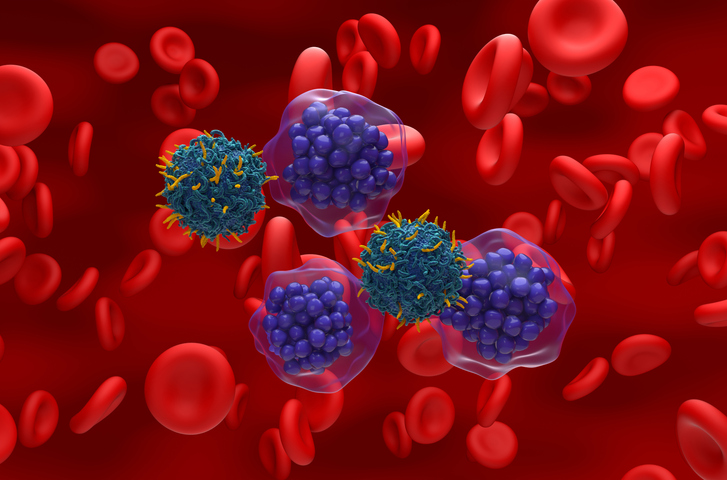
President-Elect Jennifer R. Brown, MD, PhD, will take office during the 10th Annual SOHO Conference. Dr. Brown spoke with Blood Cancers Today about her path to the presidency and her goals for the society.
As the incoming president of SOHO, what do you think are the primary priorities and challenges facing SOHO in the field at large? What are your plans and goals for the role? We’ve had a massive expansion in the therapies that are available for hematologic malignancies and also a huge expansion of the costs of those therapies. One major challenge is trying to make sure all patients have access to these therapies, certainly in the United States, but also around the world. SOHO has an important mission to educate physicians from around the world about these types of therapies and optimal management of hematologic malignancies.
SOHO hopefully can be an advocate for enhancing the access to these therapies around the world, and even within the United States, too. There’s substantial state-by-state variability, and the costs are also skyrocketing, which so far, hasn’t really been well addressed.
We obviously are very interested in training the next generation of investigators and, again, trying to make sure that potential investigators from around the world, not just in the United States, have access to education and training opportunities, both at home, and also potentially within the United States. The organization has always invited and provided funding for many investigators to come to the meeting.
I think it has become increasingly challenging to be a clinical investigator, even in the United States, with the landscape of how medicine is evolving—where one has to fill all one’s time with patient care, and it gets increasingly busy. There’s additional paperwork associated with all the patient care and protecting your time for research can be very challenging. Especially for junior investigators, trying to find that protected time to get educated, as well as learn how to do investigations—so that we can move on to improve therapy even more beyond what we have so far—is a challenge.
What are your recommendations for reaching career goals for young people in the field and particularly for women or other underrepresented communities? Finding good mentors, trying to find a situation in which you’ll have some protected time to work on this type of training, and learning how to do investigation when you’re a junior trainee are important. Learning how to write papers, clinical trials, and grants is also a set of essential skills. Those skills aren’t really taught in medical school, and that’s where getting good mentorship comes in, to try and learn that early on. You have to work hard and stay focused. If you spread yourself too broadly, it can be hard to accomplish everything, so focus is often important, too. And most importantly, don’t get discouraged! Everyone has setbacks, but if you stick to your goals, and seek out support, you can reach your goals.
Has your career journey in the specialty differed from that of your male colleagues? I’m not sure mine is so different. I don’t have children, so that didn’t really impact my career journey. I do think when I started there were very few women attendings in our institution. For example, there was no one in leukemia, one in lymphoma and she was only a couple years older than I was, no one in transplant, and no one in myeloma. There were almost no women who were attendings in our Hematological Malignancy Division, much less full professors.
Now, there are many—all those divisions have at least someone, and several have many. In that sense, it is always different when you don’t have people around you who look like you, right? This is part of why it’s harder for underrepresented minorities and women. The more we can change that, the more we can hopefully welcome everyone in the field.
How has your time as an investigator and clinician shaped your research and practice? The research I do involves the patients I’m seeing, and even in my translational research, we have their samples, and we do a lot of genetic studies on the samples. I have this fairly fluid interface between the person—the patient who I know in the clinic—how we’re treating them, and then what we know about their disease in the lab. Those things can inform each other. What we know about their disease in clinic informs what we do in the lab. What we learn in the lab sometimes even informs what I think we should do for the patient in clinic.
I think that these experiences have made me take a very personalized medicine approach to every patient, which I think is something we’re moving toward increasingly, as our understanding of genetics in particular is advancing. We still have some way to go in many cases beyond the cookie-cutter-type, guidelines-based approach to care, but are learning more every day that can help us optimize individualized care for every patient.
How does your experience in the clinic inform the care of your next patient? It certainly creates a body of experience that one can draw on for oneself in terms of thinking about future patients. I can also share my experiences when teaching fellows and residents, and also discuss them among colleagues. We all discuss challenging cases, especially if it’s very unusual, whether anyone has seen something like that and what they did.
It’s a different kind of knowledge than what we get from clinical trials. It’s the experiential, applied type of knowledge, interacting with how the diseases actually behave, as compared to a clinical trial where you’ve standardized everything as much as possible to prove that you have an effect. Then you have to take that standardized approach to the clinic and see how it plays in different scenarios that may not quite fit what was done in the trial and are harder to study in such a systematic fashion. That’s part of why there’s always an apprenticeship. I think there will always be this apprenticeship aspect to medical training.
What led you to focus on CLL? I started out with low-grade lymphoma, and then I subspecialized into CLL somewhat because of circumstances. It was becoming an open opportunity at my institution because the person who had done it before was leaving. They wanted someone to try to build an expansive program in CLL. I was interested. One of my main interests that I was starting to write grants on at that point had to do with familial CLL and lymphoma. CLL is the most familial of all the lymphomas, so that was a big plus.
The other thing was that I wanted to do translational research and the cells are easily obtained from the blood. Patients are happy to give you an extra tube of blood; it’s not hard for them. It makes it very easy to study these other aspects—genetics, drug response—and so all those things caused me to focus on CLL.
My primary mentor at the time was Dr. Arnie Freedman, who’s actually more of a low-grade lymphoma person, but supported me moving into CLL given the opportunity provided by these considerations that led to me focusing on CLL. I have never looked back—CLL has been and continues to be an absorbing and all-encompassing focus for my research.
As a doctor at the CLL Center of the Division of Hematologic Malignancies at Dana-Farber, which is one of the few centers in the country dedicated to CLL, how have you seen treatment for it change and evolve over the years, and what still needs to be done? I’ve been fortunate to be involved in a revolution in CLL therapy with these oral targeted inhibitors. I was involved in the phase I studies from the beginning. We’ve seen approvals of the first-generation drugs; we now have next-generation drugs for many of those targets.
One of my interests has been to move into combination therapies, and we now have a lot of data with combination therapies. But what we’re still trying to understand is when and whether the combination therapies are better for patients than continuous single agents. My bias has been that combination therapy is probably better, as it’s often designed to achieve undetectable minimal residual disease, which we view as a first step toward cure, and we still need to take those steps toward cure.
It’s also part of the personalized medicine approach because if some of the older patients may not want to come into clinic much, they might be happy taking a single pill continuously and that may be all they need. Whereas the younger, fitter patients are interested in these very deep remissions and long times off therapy. We’re still getting the data of direct comparison of these approaches, but it’s also likely that there will remain a significant component of patient choice and patient preference in choosing. Ultimately, we still have to get to cure, which we’re working on with the combinations and perhaps with cellular therapies, but it’s probably not there yet for most patients, unfortunately.
Turning to the SOHO Annual Meeting, what are you most looking forward to? It will be good to hear about some of the other diseases I don’t hear about as much. I’m also looking forward to learning more about ongoing SOHO initiatives and how I can try to help spearhead moving those into the next year.
Jennifer R. Brown, MD, PhD, is the Director of the CLL Center of the Division of Hematologic Malignancies at the Dana-Farber Cancer Institute and the Worthington and Margaret Collette Professor of Medicine in the Field of Hematologic Oncology at Harvard Medical School in Boston, Massachusetts.
More on Dr. Brown’s Career Journey
Dr. Brown has served on the SOHO Steering and Education committees since 2014. She also served as co-chair for the SOHO Highlights meeting in 2021. Dr. Brown is the Director of the CLL Center of the Division of Hematologic Malignancies at the Dana-Farber Cancer Institute (DFCI) and the Worthington and Margaret Collette Professor of Medicine in the Field of Hematologic Oncology at Harvard Medical School. She completed a bachelor’s and master’s simultaneously in molecular biophysics and biochemistry (MB&B) at Yale University, graduating summa cum laude with distinction in MB&B. She proceeded to Harvard Medical School, where she received her medical and doctoral degrees in molecular genetics in 1998 and was awarded the James Tolbert Shipley Prize for research accomplishment in the graduating class. She then served as an intern and resident in internal medicine at Massachusetts General Hospital followed by a fellowship in hematology and medical oncology at DFCI.
Dr. Brown joined the faculty of DFCI and Harvard Medical School in 2004, where she has an active clinical-translational research program in CLL.
Her interests include the development of novel targeted therapeutics for CLL, as well as the genomics of CLL. She has been instrumental in the clinical development of both idelalisib and ibrutinib, leading to their regulatory approvals in the indication. In the area of genomics, she has been instrumental in the description of the somatic mutation profile of CLL and is now particularly interested in the implementation of genomic technology in the clinic, including for prognosis and targeted therapy. She also has a longstanding research interest and focus on the inherited predisposition to CLL. To date, she has published over 250 papers in the scientific literature, predominantly in CLL. She is a member of the International Workshop on CLL and serves on the Alliance Leukemia and Leukemia Correlative Science Committees. In 2014, she was the recipient of two awards from DFCI: the Clinical Innovation Award and the George Canellos Award for Excellence in Clinical Investigation and Patient Care.






 © 2025 Mashup Media, LLC, a Formedics Property. All Rights Reserved.
© 2025 Mashup Media, LLC, a Formedics Property. All Rights Reserved.